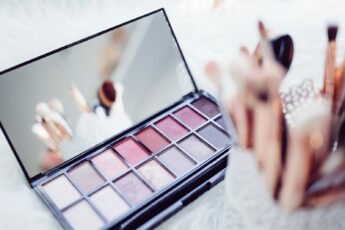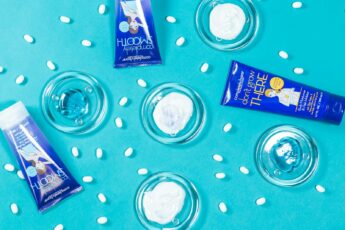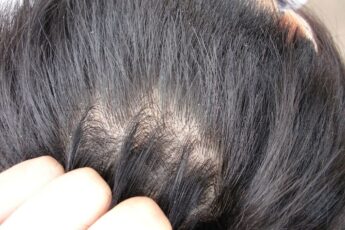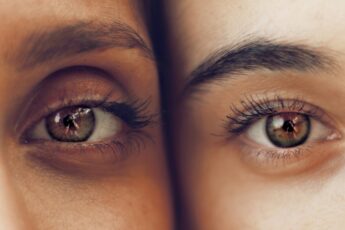Understanding Product Lifespan and Safety
The question “How often should I change my makeup?” is a common concern among beauty enthusiasts and casual users alike. As a beauty industry expert, I’ve seen firsthand how proper makeup maintenance can impact both skin health and product effectiveness.
Makeup products, like food, have a limited lifespan. Using expired cosmetics can lead to various issues:
- Bacterial growth
- Skin irritation
- Decreased product efficacy
- Changes in texture and scent
Beauty is only skin deep, but healthy skin starts with clean makeup.
This quote emphasizes the importance of maintaining fresh, uncontaminated cosmetics for overall skin health.
Understanding when to replace your makeup involves considering several factors:
| Factor | Impact on Makeup Lifespan |
|---|---|
| Ingredients | Natural vs. synthetic preservatives |
| Storage | Temperature and humidity exposure |
| Usage frequency | How often the product is opened and used |
| Application method | Direct skin contact vs. brush application |
Most makeup products will have a symbol on their packaging indicating the Period After Opening (PAO):
12MThis example indicates the product should be replaced 12 months after opening.
However, these are general guidelines. In reality, how often you should change your makeup depends on various factors specific to each product type and your personal usage habits.
In the following chapters, we’ll explore the specifics of different makeup categories, including signs of expiration, proper storage techniques, and recommended replacement frequencies. By the end of this article, you’ll have a comprehensive understanding of how to keep your makeup collection fresh, safe, and effective.
Factors Affecting Makeup Expiration
Understanding the factors that influence makeup expiration is crucial in determining how often to change makeup. These factors can significantly impact the lifespan and safety of cosmetics.
Key factors affecting makeup expiration include:
- Ingredients and preservatives
- Storage conditions
- Frequency of use
- Packaging type
Your makeup bag is a breeding ground for bacteria. Keep it clean, keep it fresh.
This quote highlights the importance of proper makeup maintenance for hygiene and safety.
Let’s explore these factors in more detail:
Ingredients and preservatives play a vital role in product longevity. Natural products often have shorter shelf lives due to fewer preservatives. Conversely, synthetic preservatives can extend a product’s lifespan but may irritate some users.
Storage conditions greatly impact makeup longevity:
| Condition | Effect on Makeup |
|---|---|
| Heat | Accelerates bacterial growth |
| Humidity | Promotes mold development |
| Sunlight | Degrades active ingredients |
Frequency of use affects expiration as well. Products used daily will expire faster than those used occasionally. Each time you open a product, you expose it to air and potential contaminants.
Packaging type also influences how quickly makeup expires:
- Pump bottles: More hygienic, slower to expire
- Open jars: More prone to contamination
- Pencils: Can be sharpened to remove exposed layers
Understanding these factors will help you make informed decisions about when to replace your makeup, ensuring both safety and efficacy in your beauty routine.
Mascara and Liquid Eyeliners
When it comes to how often you should change your makeup, mascara and liquid eyeliners require special attention. These products come into close contact with your eyes, making hygiene paramount.
Key considerations for mascara and liquid eyeliners:
- Shelf life
- Signs of expiration
- Hygiene practices
- Replacement frequency
Your eyes are precious. Don’t compromise their health with expired eye makeup.
This quote emphasizes the importance of regularly replacing eye makeup for ocular health.
Shelf life for mascara and liquid eyeliners is typically short:
| Product | Recommended Shelf Life |
|---|---|
| Mascara | 3-6 months |
| Liquid Eyeliner | 3-6 months |
Signs of expiration in these products include:
- Changes in smell
- Drying out or clumping
- Separation of ingredients
- Irritation upon application
Proper hygiene practices can extend the life of these products:
- Never pump the mascara wand (it introduces air and bacteria)
- Don’t share eye makeup
- Close caps tightly after each use
- Avoid applying mascara in dusty or dirty environments
Despite these precautions, I recommend replacing mascara and liquid eyeliners every 3-4 months or sooner if you notice any changes in texture, smell, or performance.
For those concerned about waste, consider mini sizes or travel versions of these products. They’re more likely to be used up before expiration, reducing both waste and the risk of eye infections.
Remember, when it comes to eye makeup, it’s always better to err on the side of caution. Your vision is too precious to risk for the sake of stretching a product’s lifespan.

Foundation and Concealer
When considering how often you should change your makeup, foundation, and concealer require special attention. These products cover large areas of the face and come into direct contact with your skin, making their freshness crucial for both effectiveness and skin health.
Key factors to consider for foundation and concealer:
- Formulation type (liquid, powder, cream)
- Packaging design
- Application method
- Signs of expiration
Your skin deserves a fresh canvas. Don’t let expired foundation be the barrier between you and radiant skin.
This quote underscores the importance of using fresh face products for optimal skin appearance and health.
Different formulations have varying shelf lives:
| Product Type | Typical Shelf Life |
|---|---|
| Liquid Foundation | 6-12 months |
| Powder Foundation | 18-24 months |
| Cream Foundation | 12-18 months |
| Concealer | 12-18 months |
Signs that it’s time to replace your foundation or concealer include:
- Changes in color or oxidation
- Separation of ingredients
- Unusual smell
- Changes in texture (e.g., becoming too thick or thin)
- Reduced effectiveness
To extend the life of your foundation and concealer:
- Store in a cool, dry place
- Use clean hands or tools for the application
- Close the container tightly after each use
- Avoid contaminating the product with other makeup
I recommend replacing liquid foundations and concealers annually, while powder foundations can last up to two years if properly maintained. However, if you notice any changes in performance or appearance before then, it’s best to replace the product immediately.
Remember, using expired foundation or concealer can lead to clogged pores, breakouts, and uneven application. Prioritize the health of your skin by keeping these base products fresh.
Lipsticks and Lip Glosses
Determining how often you should change your makeup for lip products requires consideration of both hygiene and product integrity. Lipsticks and lip glosses come into direct contact with your mouth, making their freshness particularly important.
Key aspects to consider for lip products:
- Texture changes
- Scent alterations
- Bacterial growth potential
- Color stability
Your smile is your best accessory. Keep it healthy with fresh lip products.
This quote emphasizes the importance of maintaining clean, fresh lip products for both aesthetics and oral health.
Typical shelf lives for lip products:
| Product | Shelf Life |
|---|---|
| Lipstick | 18-24 months |
| Lip Gloss | 12-18 months |
| Lip Liner | 12-18 months |
Signs it’s time to replace your lip products:
- Changes in texture (e.g., becoming too dry or too oily)
- Unusual smell
- Color changes or separation
- White spots (potential mold growth)
- Irritation or discomfort upon application
To extend the life of your lip products:
- Store in a cool, dry place
- Avoid leaving in hot cars or direct sunlight
- Clean the product surface occasionally with alcohol
- Don’t share lip products with others
I recommend replacing lipsticks every 18 months and lip glosses every 12 months. However, if you’ve had a cold sore or other oral infection, replace any lip products used during that time immediately to prevent reinfection.
For those concerned about waste, consider using up your lip products in creative ways before they expire:
- Mix lipsticks to create new colors
- Use as a cream blush
- Create an ombre lip look with multiple products
Remember, the area around your mouth is sensitive and prone to irritation. Using fresh lip products not only ensures the best color payoff but also protects your oral health.
Powder Products: Eyeshadows, Blushes, and Setting Powders
When considering how often you should change your makeup, powder products generally have a longer lifespan than their liquid counterparts. However, they still require attention to maintain their quality and safety.
Key factors for powder products:
- Longevity of formulas
- Contamination risks
- Proper cleaning and maintenance
- Signs of expiration
Powder doesn’t spoil, but it can become a playground for bacteria if not properly maintained.
This quote highlights the importance of proper care for powder products, even though they have a longer shelf life.
Typical shelf lives for powder products:
| Product | Shelf Life |
|---|---|
| Eyeshadow | 18-24 months |
| Blush | 18-24 months |
| Setting Powder | 18-24 months |
Signs it’s time to replace your powder products:
- Hard film on the surface
- Changes in color or texture
- Unusual smell
- Decreased performance
- Irritation upon application
To extend the life of powder products:
- Keep brushes and applicators clean
- Close compacts tightly after use
- Store in a cool, dry place
- Avoid using wet brushes or fingers in the product
I recommend replacing powder products every 18-24 months or sooner if you notice any changes in performance or appearance. Consider replacing products used around the eyes more frequently to prevent eye infections.
To maintain hygiene, regularly clean the surface of powder products:
- Scrape off the top layer with a clean tissue
- Spray with alcohol and let dry
- For pressed powders, rub gently with a clean tissue to remove any loosened product
Remember, while powder products last longer, they’re not immune to bacterial growth. Regular cleaning and proper storage are key to maintaining their quality and safety.
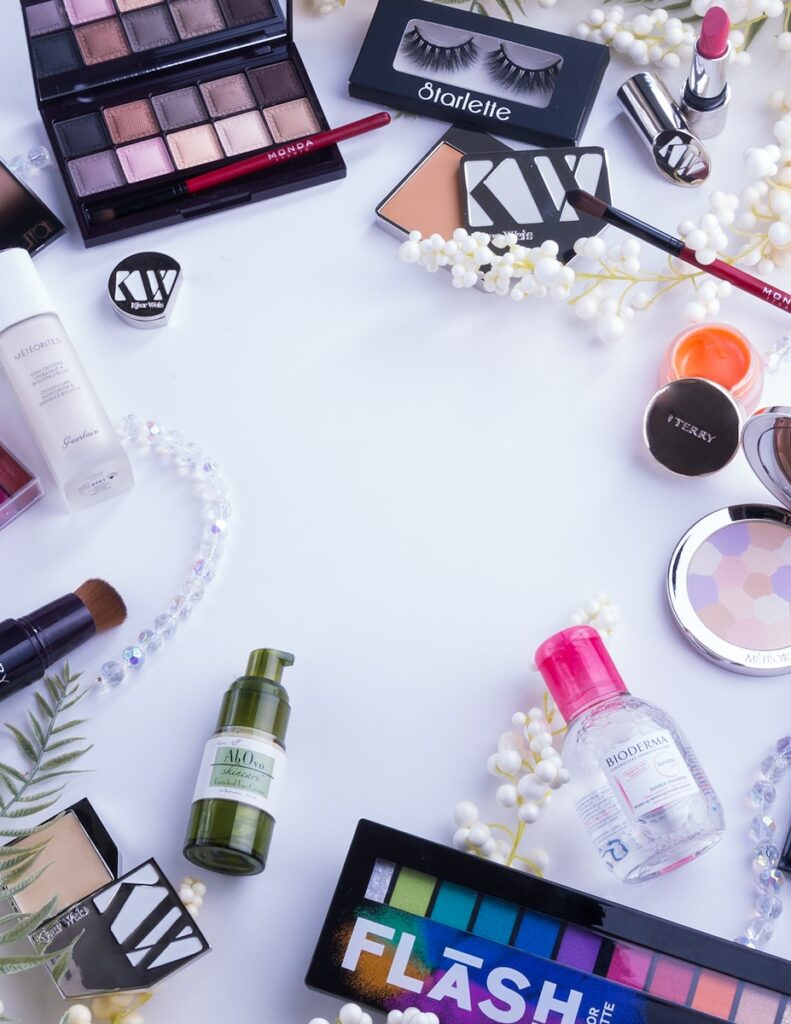
Skincare-Infused Makeup Products
The rise of skincare-infused makeup has added a new dimension to the question of how often to change makeup. These hybrid products combine cosmetic benefits with active skincare ingredients, requiring special consideration for their shelf life and efficacy.
Key aspects of skincare-infused makeup:
- Active ingredient degradation
- Efficacy concerns over time
- Special storage requirements
- Replacement guidelines
Your skin deserves active ingredients that are truly active. Don’t let expired skincare makeup sabotage your routine.
This quote emphasizes the importance of maintaining the potency of active ingredients in skincare-infused makeup.
Factors affecting the lifespan of skincare-infused makeup:
| Factor | Impact |
|---|---|
| Type of active ingredients | Some degrade faster than others |
| Packaging | Airless pumps preserve ingredients better |
| Exposure to light and air | Can degrade active ingredients |
| Frequency of use | More frequent use introduces more contaminants |
Signs it’s time to replace your skincare-infused makeup:
- Changes in color or scent
- Separation or changes in texture
- Reduced efficacy of skincare benefits
- Irritation or breakouts after use
To maximize the lifespan of these products:
- Store in a cool, dark place
- Use clean applicators or hands
- Close containers tightly after each use
- Pay attention to PAO (Period After Opening) symbols
I recommend replacing skincare-infused makeup products every 6-12 months, depending on the specific active ingredients and packaging. Products in airless pumps may last longer than those in jars.
For products containing vitamin C or retinol, be especially vigilant about changes in color or scent, as these can indicate oxidation of the active ingredients.
Remember, these products’ skincare benefits diminish over time. To ensure you’re getting the full advantages of both the cosmetic and skincare aspects, stick to the recommended replacement schedule.
Makeup Tools and Applicators
Brushes, sponges, and other makeup tools are essential for flawless application, but they need proper care and timely replacement. Over time, these tools can accumulate bacteria, lose their shape, or simply wear out.
For brushes, I recommend a thorough cleaning every 1-2 weeks, depending on use. Here’s a simple cleaning routine:
- Wet the bristles with lukewarm water
- Apply a gentle shampoo or brush cleaner
- Massage the bristles gently
- Rinse thoroughly
- Reshape and air-dry
Sponges require more frequent cleaning – ideally after each use. Replace them every 3-6 months or sooner if you notice discoloration or changes in texture.
Look out for these signs of wear:
- Shedding bristles
- Misshapen brush heads
- Persistent odors
- Discoloration
“Clean tools are the foundation of a flawless makeup application.”
When it’s time to replace your tools, consider investing in quality items. They often last longer and perform better, making them a smart choice for both your makeup routine and the environment.
Sustainable Practices in Makeup Replacement
As we become more aware of our environmental impact, it’s crucial to consider sustainability in our makeup habits. We can make a difference by minimizing waste and making thoughtful choices about the products we buy and how we dispose of them.
To reduce waste, I suggest:
- Using products fully before replacing them
- Opting for refillable containers when available
- Choosing products with minimal packaging
Many cosmetic companies now offer recycling programs. For example, some accept empty containers for proper recycling or even offer incentives for returns. Check with your favorite brands to see if they have such programs.
When shopping, look for products with longer shelf lives. Powder formulations typically last longer than liquid ones. Also, consider multi-use products to streamline your collection.
Here’s a quick guide to help balance safety and sustainability:
| Product Type | Average Lifespan | Sustainability Tips |
|---|---|---|
| Powder Eyeshadow | 2-3 years | Keep dry, clean applicators |
| Lipstick | 1-2 years | Store in a cool place |
| Mascara | 3-6 months | Never pump the wand |
| Foundation | 6-12 months | Use a spatula to dispense |
Remember, these are general guidelines. Always trust your senses – if a product smells off or changes texture, it’s time to let it go.
“The most sustainable product is the one you’ll use completely.”
By making mindful choices about our makeup routines, we can enjoy beautiful, safe cosmetics while also being kind to our planet. It’s a balance, but with a bit of effort, we can achieve both goals.
Conclusion
Regularly assessing and replacing makeup is crucial for maintaining both skin health and product efficacy. Throughout this exploration of makeup lifespans, we’ve uncovered key factors that influence when it’s time to bid farewell to our beloved cosmetics.
I believe that while general guidelines provide a helpful framework, individual usage habits and proper care significantly impact a product’s longevity. Here’s a quick recap of the main points to remember:
- Different product types have varying shelf lives
- Proper storage extends the makeup lifespan
- Regular cleaning of tools is essential
- Trust your senses – if it looks or smells off, toss it
“A fresh makeup collection is the secret to a flawless look and healthy skin.”
Balancing safety with sustainability presents a unique challenge in the world of cosmetics. I encourage you to:
- Choose products wisely
- Use them fully
- Dispose of them responsibly
By adopting these practices, we can enjoy our makeup while minimizing our environmental impact. Remember, the goal is to maintain a fresh, effective makeup collection that enhances your beauty without compromising your health or the planet.
